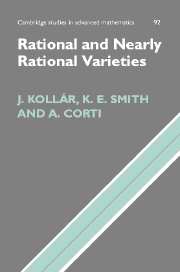3 - Rational surfaces
Published online by Cambridge University Press: 25 May 2010
Summary
We have already seen that the projective line stands alone among all curves: any projective curve remotely behaving like ℙ1 is in fact isomorphic to ℙ1. By contrast, there are numerous surfaces that share various features of the projective plane. The oldest example is the smooth quadric surface, although cubic surfaces were also recognized classically as being similar to the projective plane. Over an algebraically closed field, quadrics and cubics are birationally equivalent to the plane, and this explains most of the similarities.
In this chapter, we develop these examples into a systematic theory of surfaces sharing numerical invariants with the projective plane. The first major result, the rationality criterion of Castelnuovo, completely classifies the geometrically rational surfaces as those for which certain simple numerical invariants are the same as the plane's.
Classically, the rationality criterion of Castelnuovo was viewed as one of the cornerstones of the theory of surfaces. More recently, algebraic geometers have come to view the theory of minimal models and the study of Del Pezzo surfaces, which are a nice class of geometrically rational varieties, as the two pillars. This point of view has lessened the importance of the Castelnuovo criterion, which instead appears as a nice consequence of minimal model theory.
- Type
- Chapter
- Information
- Rational and Nearly Rational Varieties , pp. 60 - 92Publisher: Cambridge University PressPrint publication year: 2004

